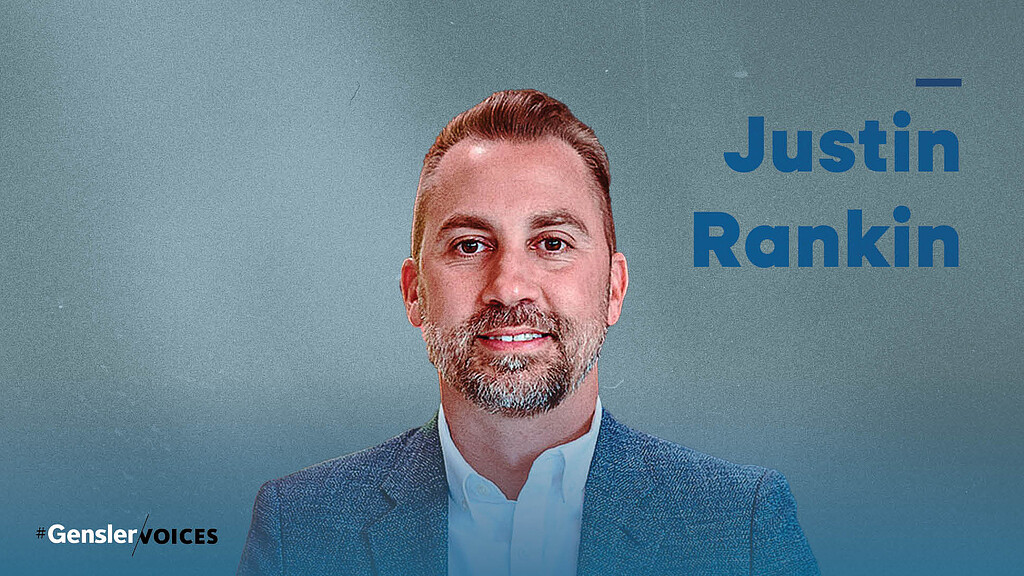Gensler Voices: Justin Rankin on The Duty of Design
July 24, 2024
This Q&A is part of a series of interviews with Gensler architects, designers, and others in the firm about their career journey, and the impact that design and architecture can have on our communities and the human experience. Here, we sit down with Justin Rankin, a practice area leader in our Austin office.
Where do you get your design inspiration from?
For me, inspiration comes from many sources, but I love to be inspired by nature. I spend as much time outdoors as possible and love to seek out patterns, structures, shadows, and movements that are unique and interesting. On a more pragmatic level, I really enjoy spending 15-20 minutes each morning running through various digital channels to see what clients and competitors are doing – noting new projects kicking off and/or projects recently completed.
How has your work mindset shifted as you’ve advanced in your career?
Early in my career, my mindset was all about design and learning important and valuable hard skills. As I’ve advanced and shifted roles, responsibilities, and expectations, my mindset has evolved to focus on the relationship between design and people – whether end users or clients (internal and external). Understanding the process required to achieve great design has provided a strong foundation for the soft skills required to achieve that, as well as to effectively manage design teams here atGensler.
What impact do you want to leave on the world?
At the simplest level, I hope that I’m able to affect and drive change and leave lasting impacts on the way we approach design process and relationships between each other, design, and the built environment. In my current role, I spend a lot of time dissecting our design delivery process and seeking out ways we can do it better. Finding “a better way” has been an internal driver for me in every aspect of my life since I can remember. It fuels me, keeps me engaged, and provides great fulfillment when achieved.
What do you think is the power of design?
The power of design at a macro level is helping to address some of the world’s most pressing issues affecting cities and communities. At a micro level, the power of design is crafting experiences for people that are not only inclusive and equitable, but productive, unique, memorable, and fascinating. Whether a workplace, airport, hotel, or airport, design is what connects humans together and with the built environment.What is a daily habit of yours that you swear by?
Big shout out to Steve Kahle (a former employer) on this one – it’s what he calls “inbox zero.” I make a point to keep my inbox at zero each and every day before I leave the office. Not zero unread, but zero. What that means is that I read and evaluate every email I get throughout the day, prioritizing and creating tasks for myself to address what’s mission critical, while filing away others where appropriate. This ensures I’m 100% in sync with what’s going on, what’s needed from me, and what my mission is for the next day. I’m also meticulous about my calendar, carefully planning each day and blocking out time for focused work while leaving slots open for internal and external meetings. This gives me great control and organization of my time and ensure maximum effectiveness.
For media inquiries, email .
